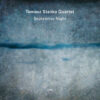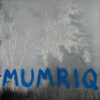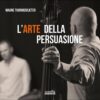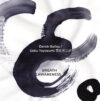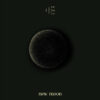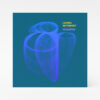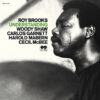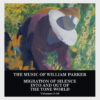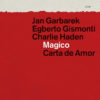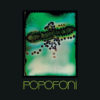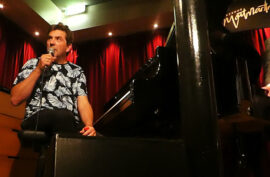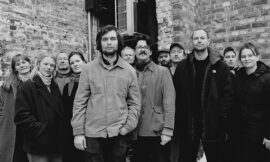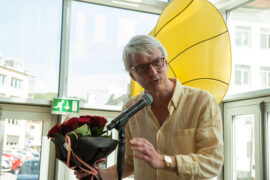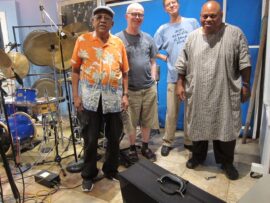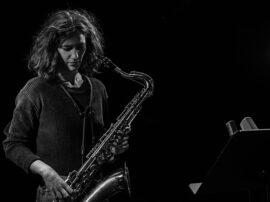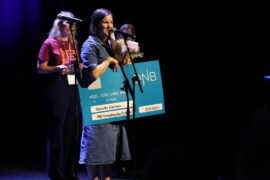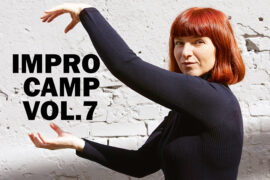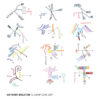
Three years ago I was fortunate enough to experience for the first time (and unfortunately, the only time, so far) a performance of Anthony Braxton Ensemble playing his ZIM compositions at the Porgy & Bess club in Vienna. The Viennese scene of like-minded, creative musicians came to pay its respects to the great master who performed with a sextet – him on alto, soprano and sopranino saxes, Taylor Ho Bynum on cornet, trumpets and trombone, Adam Matlock on accordion, vocals and recorder, Dan Peck on tuba, and Jacqueline Kerrod and Miriam Overlach on harps. This sextet played for two hours that passed almost instantly, and I thought that I could stay and listen to this ensemble playing these new ZIM compositions the whole night. The inspiring set was provocative and challenging but also poetic, playful and even sensual and openly emotional, never surrendering to conventional forms or narratives and defying all categorizations.
Luckily, Firehouse 12 released a monumental, almost 11 hours of Braxton’s ZIM Music in a box-set of 12 compositions (available as a single disc Blu-ray and as high-resolution digital files), recorded live and in-studio between March 2017 to May 2018 at Wake Forest University in Winston-Salem, North Carolina, Firehouse 12 in New Haven, La Sala Rossa in Montreal, Canada and Café Oto in London. This release documents the development of the ZIM music as the compositions and ensemble adapted to new musical situations.
ZIM is the latest iteration of Braxton’s musical systems, a series of compositional modalities titled by him as Holistic Modeling Music: different ways of imagining and structuring how a musician, or musicians, may participate in a given piece. Previous systems – each of them is associated with one of the Language Musics, were Ghost Trance Music (long sound), Falling River Music (accented long sounds), Diamond Curtain Wall Music (trills or ornamentation), Echo Echo Mirror House Music (multiphonics), and Pine Top Aerial Music (short attacks).
ZIM Music is derived from language number 11: gradient logics. These gradient logics pertain to aspects of music that continually change, faster and faster, slower and slower, brighter and brighter, darker and darker. «12 Comp (ZIM) 2017» presents the later development of the ZIM music, moving from short, linear, single-lined and mostly graphic compositions (as presented in «Quartet (New Haven) 2014», Firehouse 12, 2019) to compositions that combined traditionally notated sections with sections of individual and non-linear graphic notation. The 12 compositions maintain the gradient logics of dynamic and timbre change but infuse these gradients into the notated material itself.
Braxton says that these compositions can be viewed as «foundational material that describes a tri-universe state of sonic and visual movement (including system/recognition) extending into a world of architecture and spatial-design holism – as a utility, as a code, and as memory». The musicians were given technically impossible music and were expected to «extract» performance from the notation as part of their improvisational process. Braxton’s instructions included suggestive and often cryptic references to «a post-Scelsi transpositional music that is organic» and sayings like «ZIM MUSIC = a glider airplane that circles in a downward and/or upward spiral» or «ZIM MUSIC starts from the womb and extends to the outer surface» or «Think about the ‘ether’ of the sound (as a secondary offshoot derivative of timbre logics)». The liner notes explain this complex system in great detail.
Leaving aside the elaborate introduction to the ZIM musical system, it is obvious that no one writes music like Braxton, who celebrated at the beginning of this month his 76th birthday. No one has such a rich and encompassing musical vision, in its ever-expanding intellectual scope but also in its attempt to conceptualize music-making as a collective and most human effort, or in its relation to new and free music and to other arts and disciplines. Braxton and his core, chamber ensemble of close and like-minded improvisers – trumpeter Taylor Ho Bynum, tubaist Dan Peck, harpists Jacquline Kerrod and Shelley Burgon, augmented and altered with cellist Tomeka Reid, accordionist Adam Matlock, violinist Jean Cook, trumpeter Stephanie Richards, sax player Ingrid Laubrock, and harpists Brandee Younger and Miriam Overlach – are all well-versed in jazz legacy, free-improv and contemporary music, and all are given plenty of space to interpret Braxton’s ideas.
Any attempt to offer a brief analysis of the 12 compositions presented in «12 Comp (ZIM) 2017» is futile. Suffice to say that this release invites the listener to dive into beautiful and rich sonic universes, abstract and often lyrical soundscapes that morph into nuanced and colorful dreamscapes and then into breathtaking sonic storms, all flowing organically and create unique elastic sonic architectures with no rhythmic foundations. «12 Comp (ZIM) 2017» offers a demanding but also one of the most rewarding and immersive listening experiences that you may encounter this year, one that will always reveal new secrets and insights with each listening.
Eyal Hareuveni
Anthony Braxton (reeds), Taylor Ho Bynum (brass), Dan Peck (tuba), Jacquline Kerrod (harp), Shelley Burgon (harp), Tomeka Reid (c), Adam Matlock (acc, aerophones), Jean Cook (vio), Stephanie Richards (tp), Ingrid Laubrock (s), Brandee Younger (harp), Miriam Overlach (harp)


